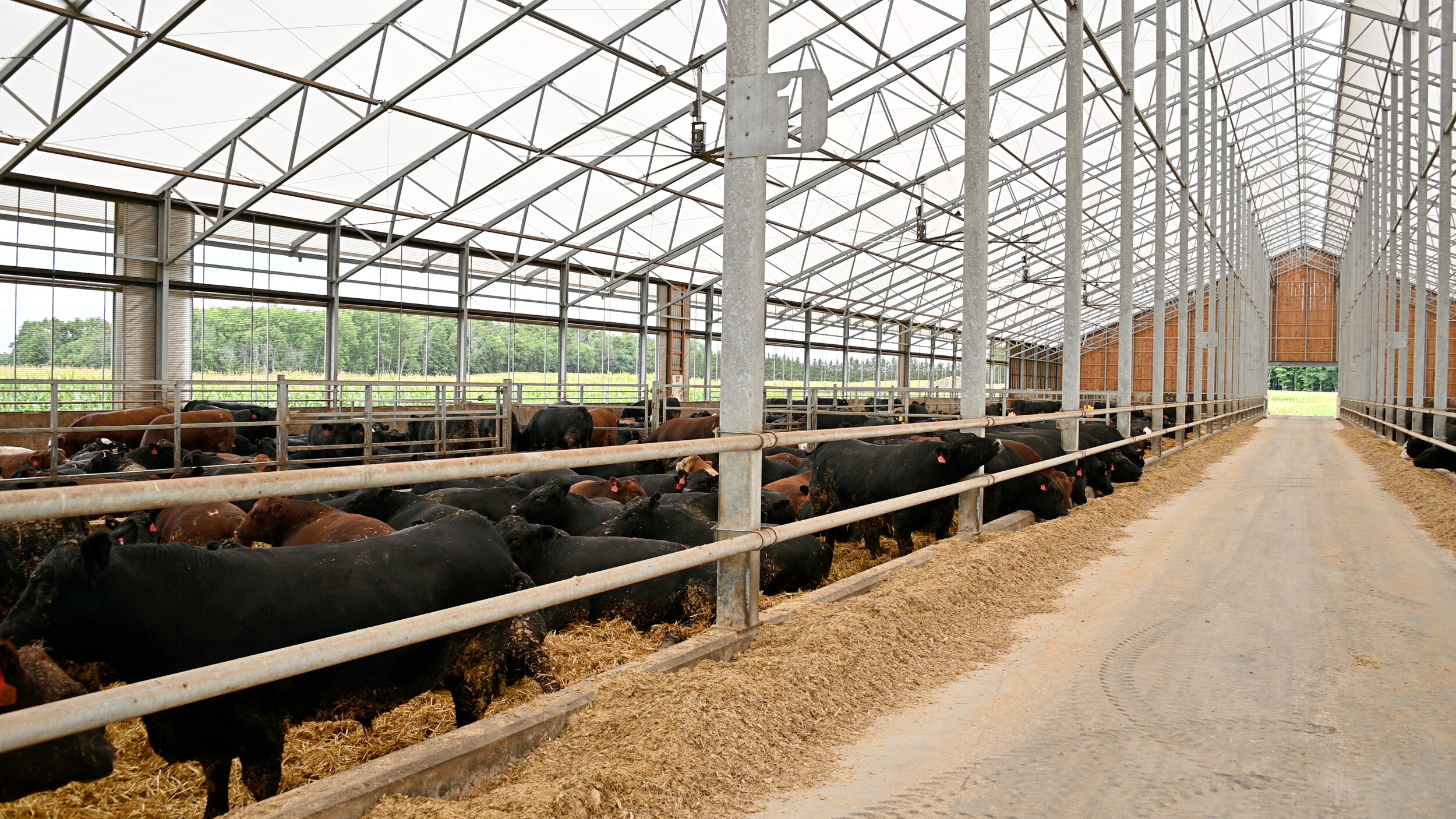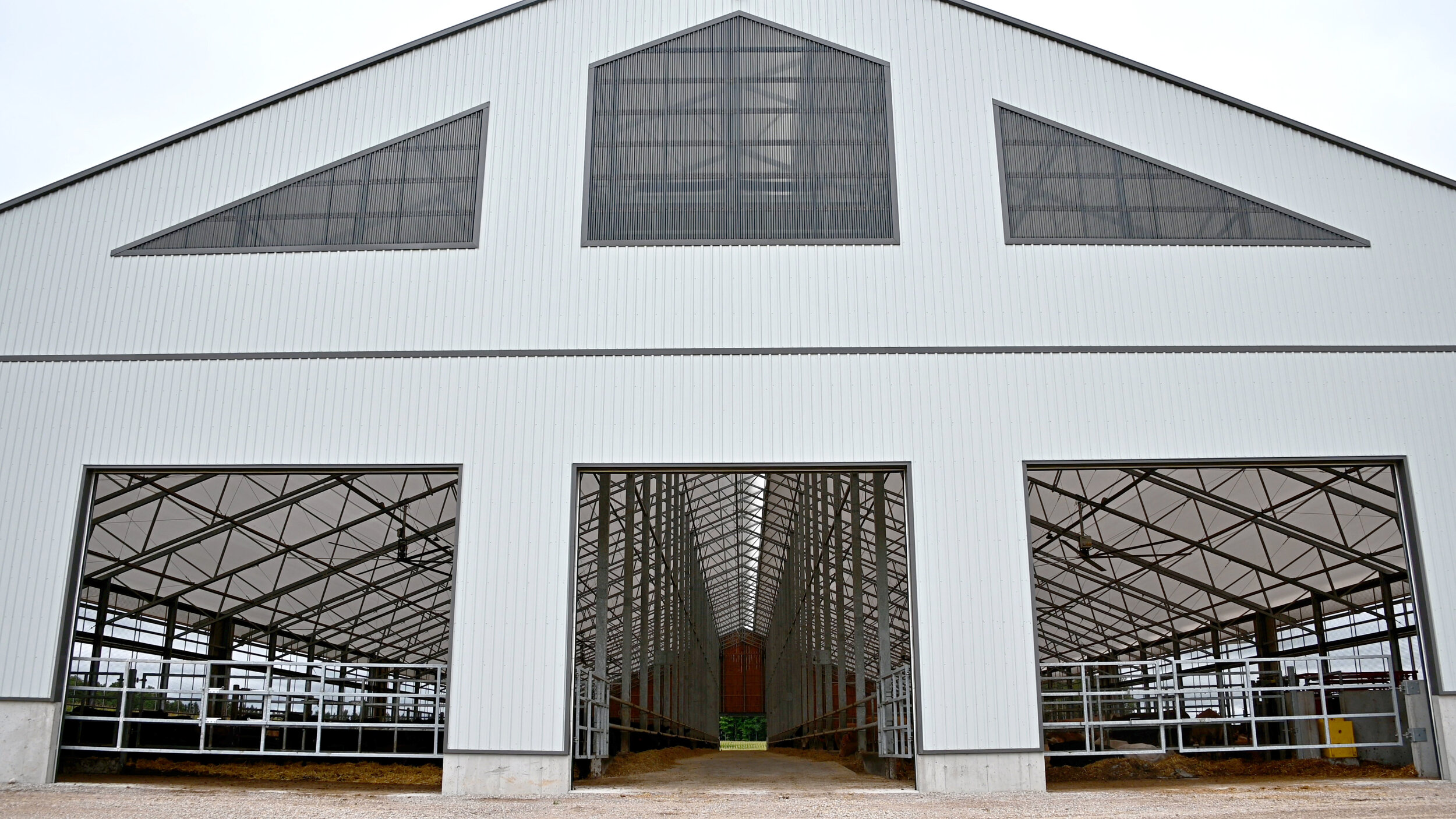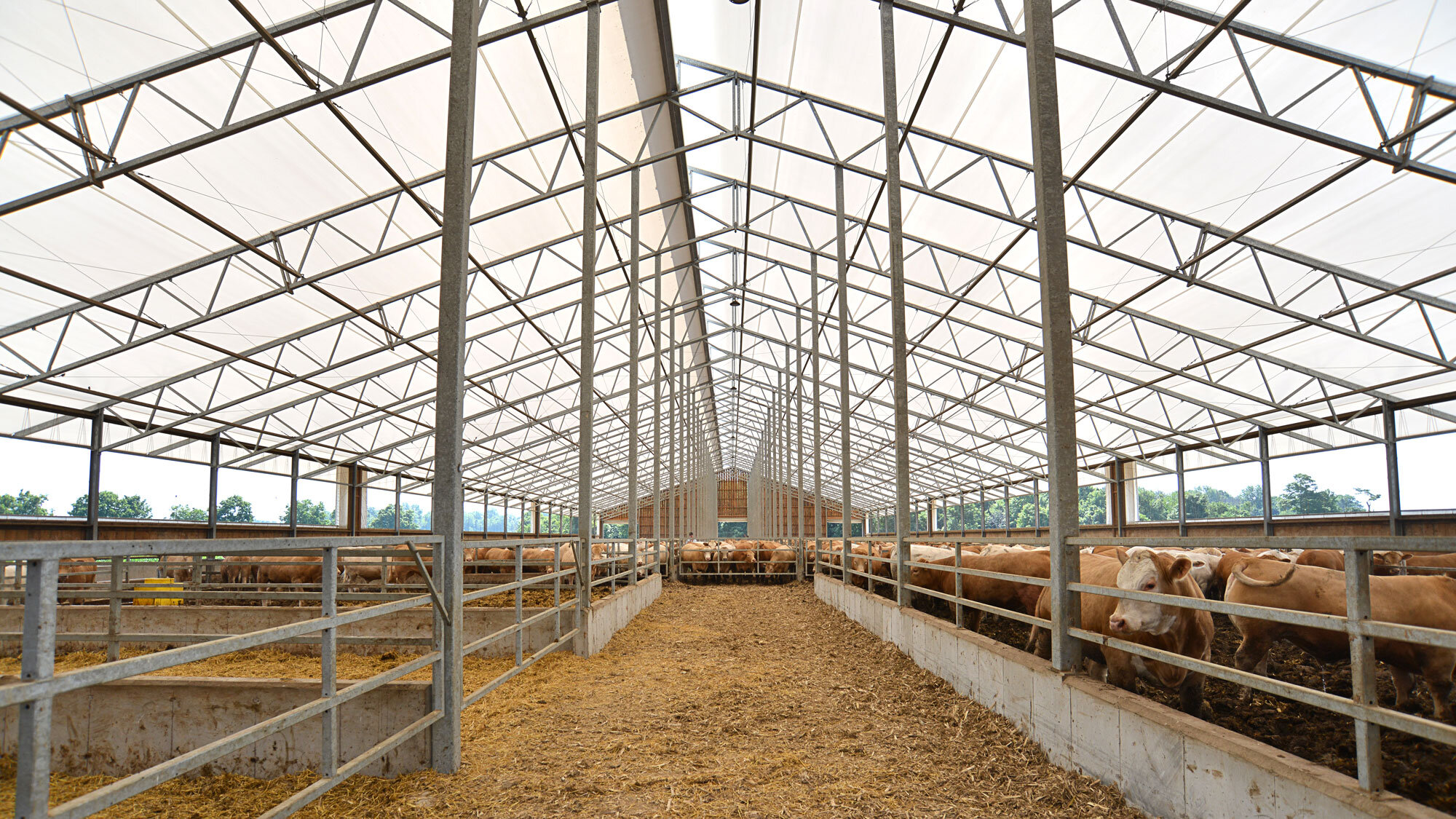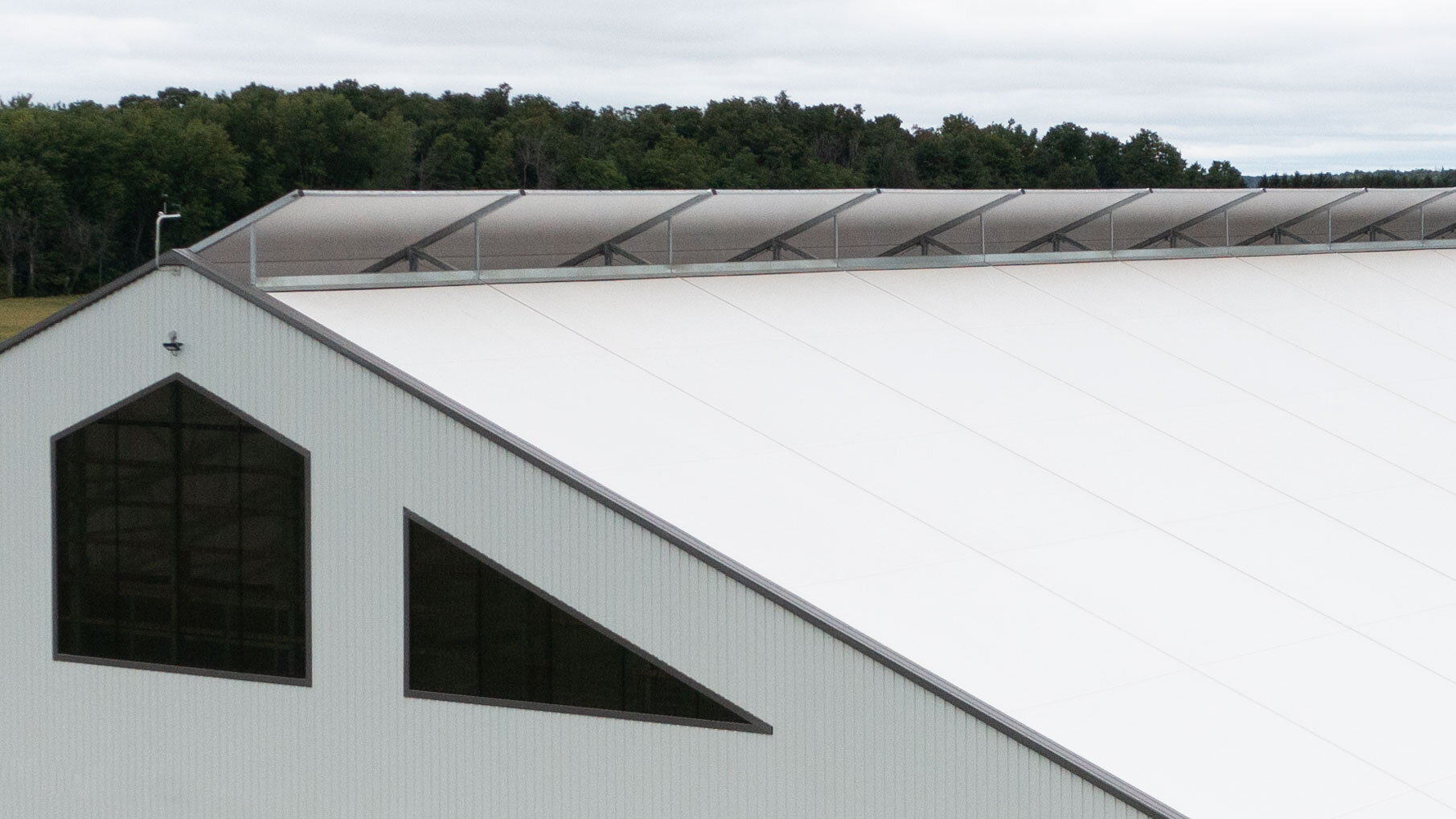CONDENSATION & AIRFLOW IN FABRIC ROOF BARNS
HOOP BUILDINGS VS. TRUE PEAK FABRIC ROOFS
Have you ever noticed on a cold or rainy day that the air was getting very warm and muggy?
The same thing happens with fabric roof buildings, especially when those buildings are home to a herd of livestock.
Without proper airflow, buildings trap in the warm breath being exhaled by their occupants. This, in turn, leads to moisture build-up.
Fabric roof barns are even more prone to this issue due to the body heat of the animals. The average dairy cow gives off about 12 to 18 pounds of moisture per day. The manure inside the building also contributes.
Avoiding Condensation
When cattle are enclosed in a barn that does not have proper ventilation, warmth and moisture can easily build up. As external temperatures cool down, high levels of humidity inside the barn result in condensation.
Cows primarily keep themselves cool through evaporation, and this process is hindered when their air becomes too damp. Hot, humid conditions will make the livestock uncomfortable, and can lead to reduced milk production in dairy cows.
On top of making your cows less comfortable and productive, the moisture and bacteria that accumulates in the barn can be detrimental to the health of your cattle, leading to respiratory issues.
You need a way for warm air to get out and fresh air to come in. That is why it is important to consider various ventilation options (for all seasons) when choosing the right style of fabric barn for your animals.
Heat and humidity in hoop barns
Hoop barns have fabric tarp roofs stretched over steel arches which are mounted on sidewalls. Like other fabric buildings, this provides shelter from sun and precipitation, while letting in more natural light for the animals.
When it comes to ventilation, most hoop barns rely on open end walls to allow for airflow. These walls need to be closed up every winter to keep out cold and snow, effectively removing your main source of ventilation. You may be able to add some sidewall curtains or a narrow ridge opening for the heat and moisture to escape through, but your options are limited by the shape of the building.
That means that you may notice an increase in humidity and condensation in your barn over the winter. And, because of the rounded shape of the roof, condensation that gathers at the top can end up dripping back down onto your cattle.
As the water runs down the truss into the animals’ area, it ends up gathering in the feed and straw, among other things. Moisture can also build up along the foundation as it runs straight down onto the walls and into the ground.
Fresh air in true peak fabric roof barns
A great alternative to the hoop barn is a true peak fabric roof building.
There are more ventilation options available for true peak fabric roofs, including a variety of chimney options or WeCover’s signature overshot roof. These barns are designed to maximize natural airflow to allow all of the hot air and moisture to escape through the roof without exposing the livestock to the elements. That way, even when the barn is closed up for the winter, your animals will still have cool, fresh air.
With proper ventilation, you should not have to worry too much about condensation in your barn as the air will remain relatively dry. However, true peak fabric roofs are designed to make sure that any condensation that does gather in your barn will not become an issue.
WeCover fabric roof barns are built with a 4/12 pitch to make sure moisture drains away instead of dripping down. Including an overhang on the sides of the building also keeps moisture from gathering around the foundation. And, thanks to their straight sidewalls, true peak fabric roof barns also allow for the addition of features such as eavestroughs.
Unlike hoop barns, true peak fabric roof buildings present more and better options for ventilation, no matter the size of your barn. This gives you the ability to choose the design that is right for you.
And, more importantly, your livestock will be happy and healthy.
Now, isn’t that a breath of fresh air?





